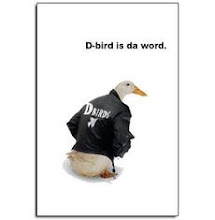We've already done some furniture rearranging, and it's worked really well - is still working well, weeks later. Read about that here. So we started looking at other areas of the library, to see how else we could rearrange furniture to make the spaces work better for teachers and classes and library users. Here's the fiction section before we started:
.
.
And from the other end..
.
.
It worked OK, had been in this separate-table configuration for years. Having seen how the seminar-style rectangle downstairs worked, though, we wanted to try it.
.
There is a catch. You need more tables, when you're only using one side of them. We scrounged a couple of tables from around the school, did a bit of bait and switch with library tables so the nicest ones were up here and the scrounged ones covered up (making the best of what we had). It's not yet finished - we need to get a couple more tables so it can seat a full class around the outside, and we're aiming for the rectangle-with-a-gap such as we have downstairs. But it's different.
.
.
We chuckled that it's kinda magnet-like, with those coloured ends (we couldn't do matchy-tables with the lot, so we made the best of it).
.
We have found, with this seminar-like table arrangement, that it has a positive effect both on class groups and on the use of the space during breaks. For classes, as I discussed in the blog entry on downstairs, it breaks up little chatty groups and makes kids have their unguarded front to the world, so they are more visible and feel more visible. The teachers find they can eyeball a class more easily, use the centre to move around the class, check work, do a Geoffrey Robertson if they choose, and so forth. Classes are quieter, by and large.
.
During break times, this configuration actually allows more individual work - there are more spaces than with six separate tables, more chances for a kid to work individually (because all you need is one space either side of you - one kid at a table could easily get overtaken by a group choosing to sit there). Group work is still possible, still workable, using ends and corners.
.
There is at least one room in the school where this configuration has also been adopted already, and teachers are expressing a preference for it because of the positive effect it has on their classes.
.
What you need: enough tables. Try doing a bit of graph paper scale work before shifting tables around - measure up, see what's possible. It does eat a tad more acreage than separate tables. If you have the budget for new tables, perhaps investigate slightly narrower ones, if your space is tight.
.
Cheers, Ruth
.
* GIFSL = Good Ideas For School Libraries
* GIFSL = Good Ideas For School Libraries

























1 comment:
Hi Ruth,
I have been visiting your blog recently after several messages you posted on OZTL net interested me. I love your ideas and your renovations. In particular I have been following your furniture rearrangements. I have a very unruly group of Year 12 students who find it very difficult to stay on task so after viewing and reading your u shape design I decided to give it a go in my own space.
Previously I had 3 groups of 3 tables facing each other. This led to much conversation and very little work. After moving the tables around I now have a u shape like yours with all chairs on the outside. All staff have reacted very positively to the change and most of the students are liking it. Many of the year 12 students are actually settling down to work better in this arrangement - I think you are right they are on view. So once again thanks for sharing your ideas on your blog with us other Teacher Librarians and keep up the good work - it is awesome to work in a Library.
Trish Marmont
Post a Comment